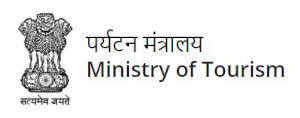Goa Kala Academy
This spacious and beautiful complex is perhaps the most prominent centre for art and culture in Goa today. Built through the collaboration of architect Charles Correa and artist Mario Miranda, the spatial and visual feast that this complex offers is nevertheless often dwarfed by the spectacular music and drama performances that are scheduled here.
Well worth a visit in its own right it has also gained popularity as a venue for weddings and other functions.
Art and Architecture:
This low rise complex makes excellent use of visual and spatial relations. Built over a ten year period from 1973 to 1983, this complex makes use of a post-modernist plan-form of post and beam construction on an orthogonal grid to achieve the variations in dimensions needed for a place with multifarious purposes.
The academy is also given an additional interest by the realistic illusions done by Mario Miranda on the walls, portraying old-timey windows, doors and staircases along with various people using them.
The outer walls of the academy are constructed from red laterite rock, found all over Goa and reminiscent of the great forts that can be found across the state. The rough, unfinished laterite surface creates a pleasant contrast with the smooth concrete surfaces of the columns and pergolas.
The entryway is a large double height space and the open floor plan of the ground floor draws the visitor inside. Charles Correa also created a deliberate internal ‘street’ evocative of Goa of days gone by.
The murals on the walls, which have been created by world famous cartoonist Mario Miranda are probably a tribute to Konkani Tiatr as a similar art form is used in the creation of set pieces. The realistic archways, steps and balconies turn the entire building into a stage where all the visitors are in essence actors.
Auditoriums:
The Kala Academy boasts three stages, an air-conditioned auditorium called the Dinanath Mangueshkar Kala Mandir, an open air amphitheatre and an experimental theatre for smaller productions.
The air-conditioned auditorium is remarkable for its acoustics and the art work which resembles an old fashioned theatre with patrons seated in their boxes around the walls and jungle art on the ceiling, again the creation of Mario Miranda.
The acoustic properties of the auditorium allow for a variety of performances, both Indian and Western, musical and drama, instrumental or vocal. The false ceiling allows for adjustments in the acoustics depending on the requirement for the performance with absorbent materials that can be placed in the compartments concealed above it.
The theatre boxes painted on the walls, besides having typical local figures within them have real curtains behind them which can be opened or shut to change the absorbency of sound. At the start of a performance, the lights dim in gradual fashion so as to leave the painted figures in the boxes illuminated till the last moment. At the end of the performance this process is reversed and spotlights reveal the painted scene on the ceiling above the false compartments which depicts a Goan jungle scene.
The open-air amphitheatre can hold an audience of 2000 if they are standing or 1312 if they are being provided with chairs. These two main venues host a variety of events, from orchestras and choirs to competitions and tiatr. The ‘black box’ experimental theatre hosts smaller scale experimental productions.
Other Facilities:
The Academy, as the name suggests is also the home of four cultural schools; Indian classical music, Western Classical music, Drama and Dance. There is also accommodation within the premises which is made available for visiting performers and artists.
The exhibition hall often houses showings of books, jewellery and art to name but a few. The art gallery exhibits works by both local and visiting artists. There is also a large and well-stocked library on the premises which houses not only books but slides, transparencies and musical spool tapes.
The library maintains art history and music history films as well as a large variety of books on Indian as well as Western culture and art. There are displays of works by local artists. These include not only painting but also sculpture and art in different mediums.
This facility is open to students of the academy, staff, teachers, etc as well as art-lovers and critics from across the globe.
Whether for its convenient location on Campal Street in the heart of Panaji, for its wide variety of performances and shows, or just to take a look around, the Kala Academy is a favourite stamping ground for those who have even the slightest interest in art and culture.
This spacious and beautiful complex is perhaps the most prominent centre for art and culture in Goa today. Built through the collaboration of architect Charles Correa and artist Mario Miranda, the spatial and visual feast that this complex offers is nevertheless often dwarfed by the spectacular music and drama performances that are scheduled here.
Well worth a visit in its own right it has also gained popularity as a venue for weddings and other functions.
Art and Architecture:
This low rise complex makes excellent use of visual and spatial relations. Built over a ten year period from 1973 to 1983, this complex makes use of a post-modernist plan-form of post and beam construction on an orthogonal grid to achieve the variations in dimensions needed for a place with multifarious purposes.
The academy is also given an additional interest by the realistic illusions done by Mario Miranda on the walls, portraying old-timey windows, doors and staircases along with various people using them.
The outer walls of the academy are constructed from red laterite rock, found all over Goa and reminiscent of the great forts that can be found across the state. The rough, unfinished laterite surface creates a pleasant contrast with the smooth concrete surfaces of the columns and pergolas.
The entryway is a large double height space and the open floor plan of the ground floor draws the visitor inside. Charles Correa also created a deliberate internal ‘street’ evocative of Goa of days gone by.
The murals on the walls, which have been created by world famous cartoonist Mario Miranda are probably a tribute to Konkani Tiatr as a similar art form is used in the creation of set pieces. The realistic archways, steps and balconies turn the entire building into a stage where all the visitors are in essence actors.
Auditoriums:
The Kala Academy boasts three stages, an air-conditioned auditorium called the Dinanath Mangueshkar Kala Mandir, an open air amphitheatre and an experimental theatre for smaller productions.
The air-conditioned auditorium is remarkable for its acoustics and the art work which resembles an old fashioned theatre with patrons seated in their boxes around the walls and jungle art on the ceiling, again the creation of Mario Miranda.
The acoustic properties of the auditorium allow for a variety of performances, both Indian and Western, musical and drama, instrumental or vocal. The false ceiling allows for adjustments in the acoustics depending on the requirement for the performance with absorbent materials that can be placed in the compartments concealed above it.
The theatre boxes painted on the walls, besides having typical local figures within them have real curtains behind them which can be opened or shut to change the absorbency of sound. At the start of a performance, the lights dim in gradual fashion so as to leave the painted figures in the boxes illuminated till the last moment. At the end of the performance this process is reversed and spotlights reveal the painted scene on the ceiling above the false compartments which depicts a Goan jungle scene.
The open-air amphitheatre can hold an audience of 2000 if they are standing or 1312 if they are being provided with chairs. These two main venues host a variety of events, from orchestras and choirs to competitions and tiatr. The ‘black box’ experimental theatre hosts smaller scale experimental productions.
Other Facilities:
The Academy, as the name suggests is also the home of four cultural schools; Indian classical music, Western Classical music, Drama and Dance. There is also accommodation within the premises which is made available for visiting performers and artists.
The exhibition hall often houses showings of books, jewellery and art to name but a few. The art gallery exhibits works by both local and visiting artists. There is also a large and well-stocked library on the premises which houses not only books but slides, transparencies and musical spool tapes.
The library maintains art history and music history films as well as a large variety of books on Indian as well as Western culture and art. There are displays of works by local artists. These include not only painting but also sculpture and art in different mediums.
This facility is open to students of the academy, staff, teachers, etc as well as art-lovers and critics from across the globe.
Whether for its convenient location on Campal Street in the heart of Panaji, for its wide variety of performances and shows, or just to take a look around, the Kala Academy is a favourite stamping ground for those who have even the slightest interest in art and culture.





